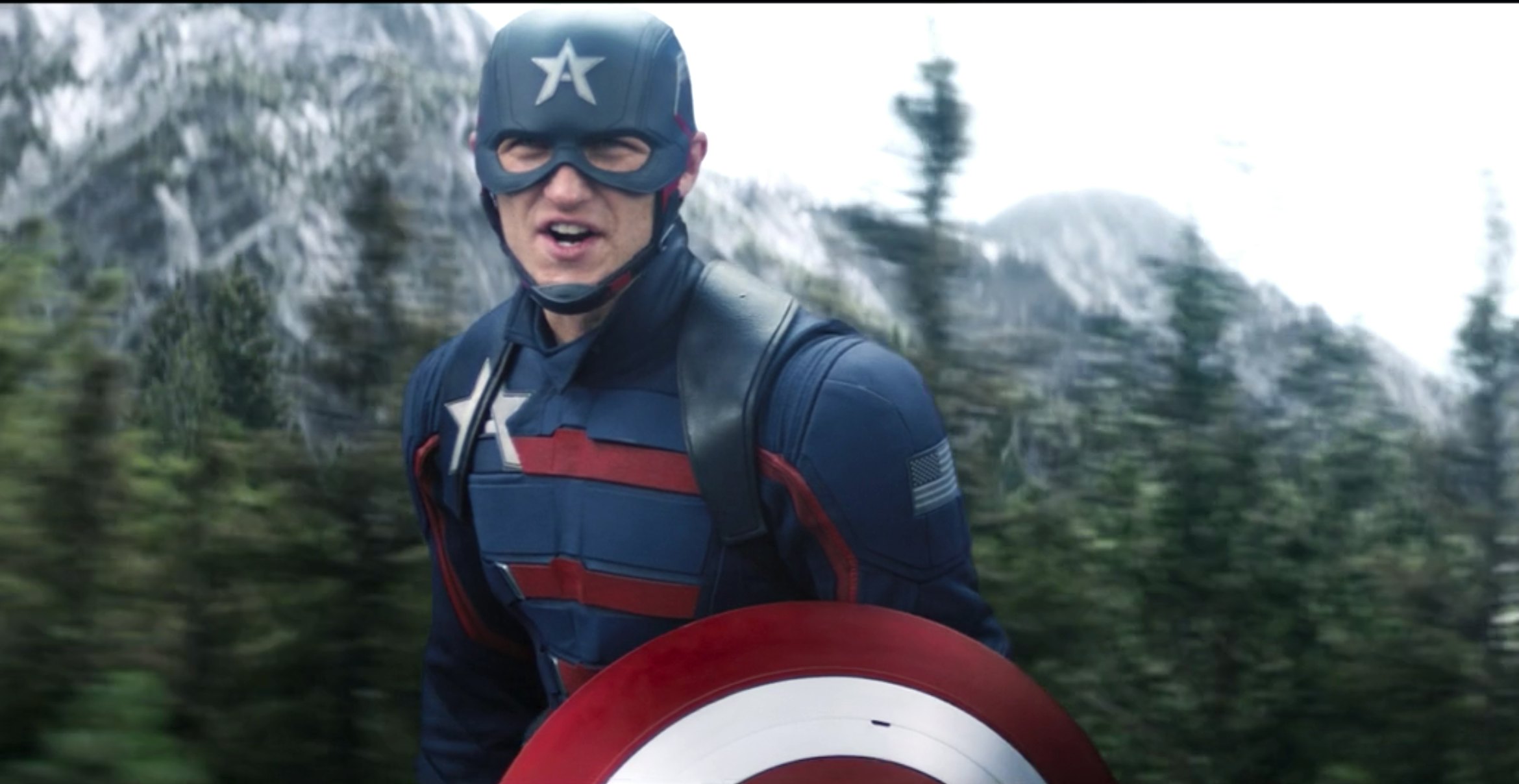
There’s a new hero (or villain?) in town. In the finale of The Falcon and the Winter Soldier, John Walker (Wyatt Russell) finally accepts he’s not fit to become Captain America. Instead, there’s another identity better suited to his name: U.S. Agent.
But who is the U.S. Agent? What makes him different from Captain America? And most importantly, how do the comic books set up what’s to come in the Marvel Cinematic Universe now that U.S. Agent is on active duty? Here’s everything we know about U.S. Agent and what he might influence throughout the MCU.
Who is U.S. Agent in the MCU?
As we explained a few weeks ago, John Walker’s time as Captain America came to an end in the comics when Walker was forced to accept he wasn’t fit for the role. This allowed the real Captain America, Steve Rogers, to reassume the mantle in Captain America #350.
But a while after that, in issue #354, John Walker returned under a new name and costume: U.S. Agent. Using his own vibranium shield and the black costume Steve Rogers wore when he was “The Captain” — reflective of Rogers’ disillusionment after being forced to answer to a new agency, the Commission on Superhuman Activities — Walker’s role as U.S. Agent was fully under the Commission’s control.
Unlike Steve Rogers, Walker was a Captain America the government could control. Walker wasn’t an idealist. He was pragmatic. He would get the job done without questioning too many orders. He wasn’t just a Super Soldier. He was the perfect soldier.
And that’s pretty much been John Walker since: As U.S. Agent, he’s been stripped and reinstated by authority figures many times. He’s been a bit of a nomad, joining up with many teams like Force Works, the New Invaders, The Jury, Omega Flight (reluctantly, as Walker told Tony Stark he “serves Uncle Sam, not Major Maple Leaf”), and the Avengers (West Coast, Mighty, and Dark). And always, he’s come up just short of matching the towering stature of Steve Rogers. During the events of 2006’s Civil War, Walker was pro-registration because of course he was. Ten years later in Civil War II, Walker is tasked with confronting Sam Wilson to put down his shield as Captain America.
An intense fight with Nuke — another Super Soldier with an extreme, distorted sense of patriotism — left Walker wheelchair-bound and with a prosthetic arm. But due to his service during the events of the 2010 storyline Siege, Walker was appointed Warden of The Raft (which made its second appearance in the MCU in the finale of The Falcon and the Winter Soldier).
What U.S. Agent means for Marvel Phase 4
Walker has been through a lot as U.S. Agent, and there is no shortage of stories to adapt for the MCU. He could establish a West Coast Avengers. He could lose his arm. He could be the stepping stone to the Dark Avengers. And with Christopher Priest having just written a five-issue miniseries U.S. Agent, it’s not out of the realm of possibility for a solo Disney+ series, especially given his newfound popularity.
Walker represents potentially many things to the MCU. The only thing he isn’t is a certainty. With his service to “Val” (Julia Louis-Dreyfuss) as mysterious as Val herself — is she HYDRA? Is she with Nick Fury? — makes the black costume of U.S. Agent that much more ominous.
A brilliant U.S. Agent Easter egg
Just because I couldn’t help but notice this: Walker in The Falcon and the Winter Soldier quotes his own cover dialogue from Captain America #354, his first appearance as U.S. Agent.
The Falcon and the Winter Soldier is now streaming on Disney+.







